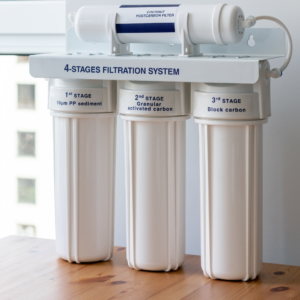Furnaces are essential for heating homes, and they come in various types, each with its own set of advantages and applications. Here’s an overview of the different types of furnaces:
1. **Gas Furnaces:**
– *Fuel:* Gas furnaces are the most common type, using natural gas or propane as fuel.
– *Efficiency:* They are known for their high efficiency, often achieving Annual Fuel Utilization Efficiency (AFUE) ratings of 90% or more.
– *Cost:* Gas furnaces generally have lower operational costs compared to some other types.
2. **Electric Furnaces:**
– *Fuel:* Electric furnaces use electricity as the heating source.
– *Installation:* They are relatively easy to install and don’t require venting.
– *Efficiency:* Electric furnaces may have slightly lower efficiency compared to gas furnaces but are suitable for areas with milder winters.
3. **Oil Furnaces:**
– *Fuel:* Oil furnaces burn heating oil to produce heat.
– *Efficiency:* They are less common today due to environmental concerns, but modern models can be efficient.
– *Installation:* Oil furnaces require on-site fuel storage and regular deliveries.
4. **Propane Furnaces:**
– *Fuel:* Propane furnaces operate on propane gas, often used in areas without natural gas lines.
– *Efficiency:* They are similar to natural gas furnaces in terms of efficiency.
– *Installation:* Like oil furnaces, propane furnaces may require on-site fuel storage.
5. **Ductless Mini-Split Systems:**
– *Design:* These systems consist of an outdoor unit connected to one or more indoor units.
– *Zoning:* Ductless mini-splits allow for zoning, enabling different temperatures in various rooms.
– *Efficiency:* They are highly efficient and are a good option for homes without existing ductwork.
6. **Geothermal Heat Pumps:**
– *Heat Source:* Geothermal systems use the constant temperature of the earth to heat and cool homes.
– *Efficiency:* They are among the most energy-efficient heating and cooling systems available.
– *Installation:* Installation can be more complex and expensive, but they offer long-term energy savings.
7. **Hydronic (Hot Water) Furnaces:**
– *Heat Distribution:* These systems use hot water to distribute heat through radiators, baseboards, or radiant floor heating.
– *Efficiency:* Hydronic systems can be highly efficient, and they provide consistent, comfortable heat.
– *Fuel Source:* They can be powered by various fuels, including gas, oil, or electricity.
8. **Dual-Fuel Systems:**
– *Combination:* Dual-fuel systems combine a heat pump with a gas or oil furnace.
– *Efficiency:* These systems automatically switch between the heat pump and the furnace based on outdoor temperatures, optimizing efficiency.
– *Versatility:* They are suitable for regions with varying climate conditions.
When choosing a furnace type, it’s crucial to consider factors like the climate in your area, energy efficiency, installation costs, and the availability of fuel sources. Consulting with HVAC professionals can help you determine the most suitable furnace for your specific needs and preferences.





